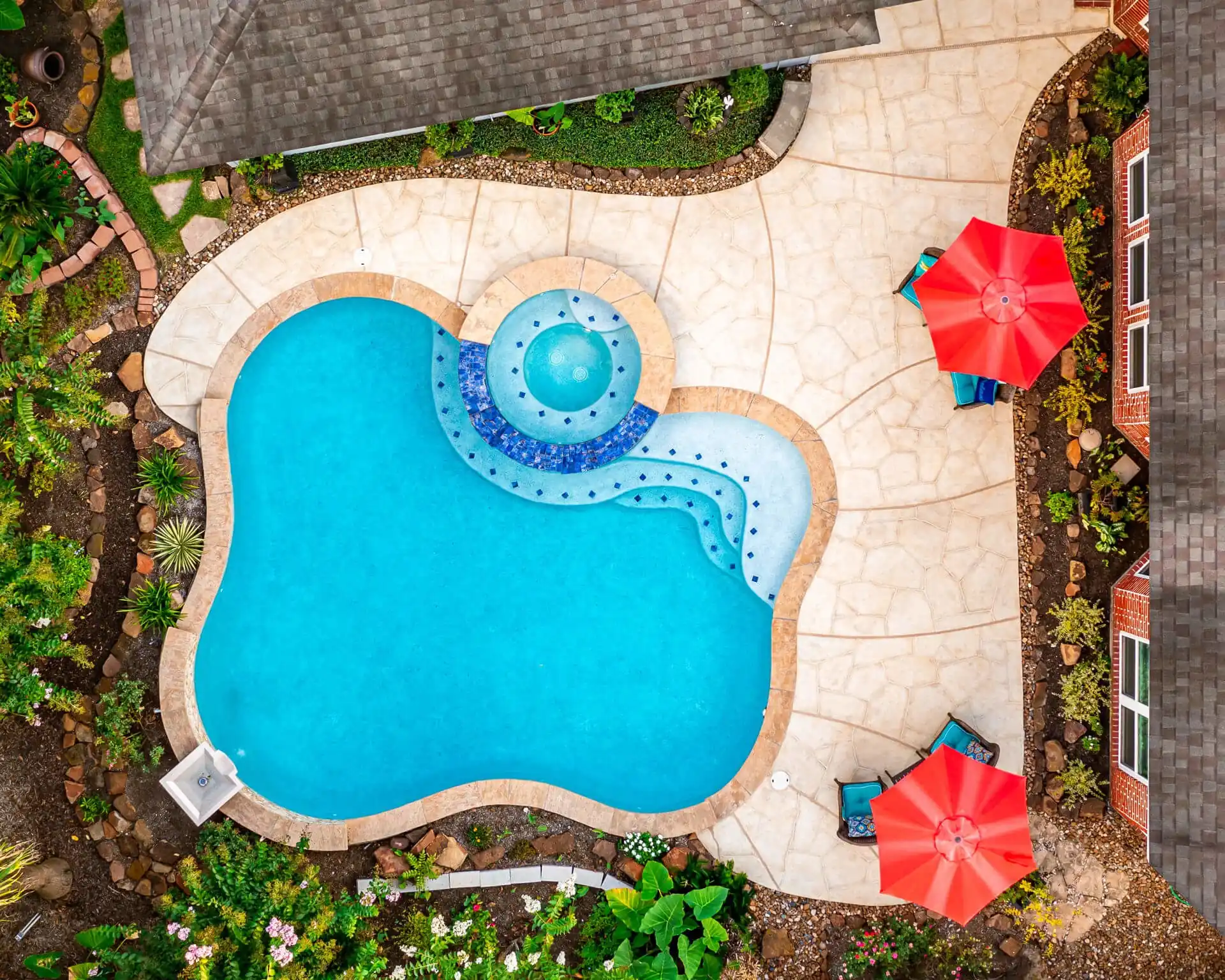We Ranked The Best Pool Concrete Deck Materials
Our design-build experts compared pool concrete deck materials for style, heat, moisture and slip resistance. See the 2 best concrete options for your pool.

You have plenty of material options for your upcoming pool deck project. If your space requires a premium blend of strength, stability and resistance to heat and moisture, concrete is the best pool deck option for your needs.
We’re Allied Outdoor Solutions. Since 2009, we’ve transformed 25,000+ Texas backyards into elevated outdoor living spaces. Our outdoor design-build experts have installed and renovated thousands of concrete pool decks, and we used their experience to build this informational guide for homeowners.
In this article, we’ll outline 4 pool concrete deck options, and explain why Carvestone and concrete pavers are best for most homeowners. We’ll also compare concrete options for specific use in pool deck installation vs. renovating your existing deck.
Live in Texas? Schedule a free consultation with Allied Outdoor Solutions. See why over 25,000 Texas homeowners trust our pool deck experts.
The Best Concrete Pool Deck Solution For You

Want a fast, direct answer to the best concrete material for your pool deck or patio? Our design-build experts agree that Carvestone is the best concrete material for most pool decks.
Carvestone offers superior heat and pressure resistance to other concrete materials and is much thinner — add strength to your pool deck without adding height.
It’s also highly customizable. Get the color, pattern and texture you want, with complete consistency throughout your space that stamped concrete can’t achieve.
Keep reading for detailed insights, pros and cons, and a comparative analysis of concrete materials for pool decks.
See how concrete stacks up to travertine, porcelain and other pool deck materials in our updated material comparison guide.
Concrete Pool Deck Solutions in Texas Outdoor Spaces
Allied Outdoor Solutions is a Texas design-build firm focused on transforming backyards into stylish, durable outdoor living spaces.
Outdoor concrete has to overachieve in Texas, especially around your pool. It must survive the brutal humidity in Houston, take a beating from UV rays in San Antonio, and endure 100+ days of 100°F heat in Dallas and Austin.
Our concrete pool decks also have the structural integrity needed to withstand movement, settling and shifting of Texas’ expansive clay soil. This is another reason we love Carvestone — one continuous concrete surface, bonded to a sturdy concrete substrate.
Want concrete pool deck inspiration? Visit our updated design gallery.
Pool Concrete Deck Types: Defining the Differences
When our experts talk about concrete for pool decks, they discuss 3 primary options:
Let’s define these concrete materials in the context of building your pool deck.
The patio upgrade you’ve imagined? We’ll help make it real. Schedule your free consultation.
Broomed Concrete
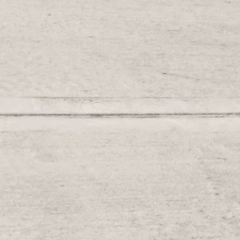
A freshly poured concrete slab is textured to provide greater slip resistance around your inground pool. A stiff-bristled broom is dragged across the still-wet surface to create a grooved surface — less slips, less falls, more protection for your kids and your pool guests.
Beyond this broom-finished texture, the concrete is generally plain in appearance.
Carvestone (Modified Concrete Overlay)
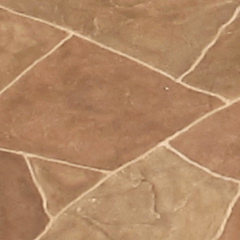
Carvestone is a modified concrete overlay material that offers tremendous customization for outdoor spaces. It’s easily colored, textured and patterned to match any existing aesthetic, creating a seamless design flow between your pool deck, home and other outdoor living zones.
It’s also prized for its durability — Carvestone is rated to withstand 6,000 PSI of direct pressure. It’s easily applied as a thin layer (¼” to ⅜” in height) over a concrete substrate, pea gravel or exposed aggregate.
Concrete Pavers
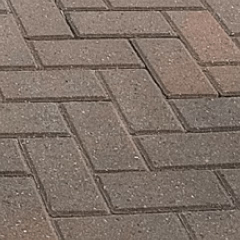
Concrete pool pavers offer excellent durability and high pound-for-pound strength. Their smaller surface area allows for compact weight distribution, and gaps are filled with polymeric sand to resist moisture infiltration, weed growth and mildew in wet poolside areas.
While not quite as customizable as Carvestone, concrete pavers do offer a great deal of color and texture flexibility. Textured pavers significantly reduce slip-and-fall risk in pool decks.
Stamped Concrete
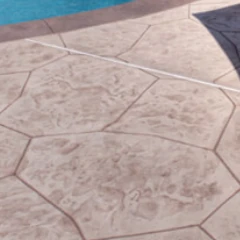
Stamped concrete is a decorative concrete option where fresh concrete is poured, then imprinted with a stamped pattern using a second color.
Results of stamped concrete pool decks are mixed. It’s easy to pour and decorate, but larger surface areas often have uneven decor results — every truckful of concrete is stamped individually, leading to inconsistent applications. Slip resistance is lower than other options.
3 Crucial Factors in Choosing Pool Deck Concrete Materials
Concrete offers a great deal of advantages as an outdoor building material, like great pressure resistance and general ease of transport. But when it comes to using it for your pool deck, 3 factors matter more than the rest.
- Heat resistance
- Moisture resistance
- Slip resistance
Heat Resistance
Nobody wants to hop out of the pool and step directly onto a scorching hot pool deck. Choosing lighter colors mitigates against heat absorption, but your pool deck materials should also have innate heat resistant qualities.
This makes concrete a stronger contender for pool decking than other materials — since its surface is less permeable than natural stone or brick, less heat is trapped in the material.
Moisture Resistance
Poolside areas are rich with opportunities for moisture damage, mildew and mold. Porous pool decks allow seepage from pool water and rain, causing long-term damage and discoloration.
A properly sealed concrete pool deck protects against moisture damage and defends against long-term degradation and mildew concerns. Ask your pool deck contractor about the best sealant options for your new space.
Slip Resistance
Nothing ruins a beautiful day at the pool faster than a slip and fall. Protect your kids, relatives and guests from taking a spill at poolside by choosing deck materials with high slip resistance.
Textured concrete pool decks offer excellent slip resistance. If your materials aren’t naturally grooved, ask your installer for customized options to improve its texture.
Need more design inspiration? View our patio and pool decks gallery.
How We Ranked Concrete Materials for Pool Decks
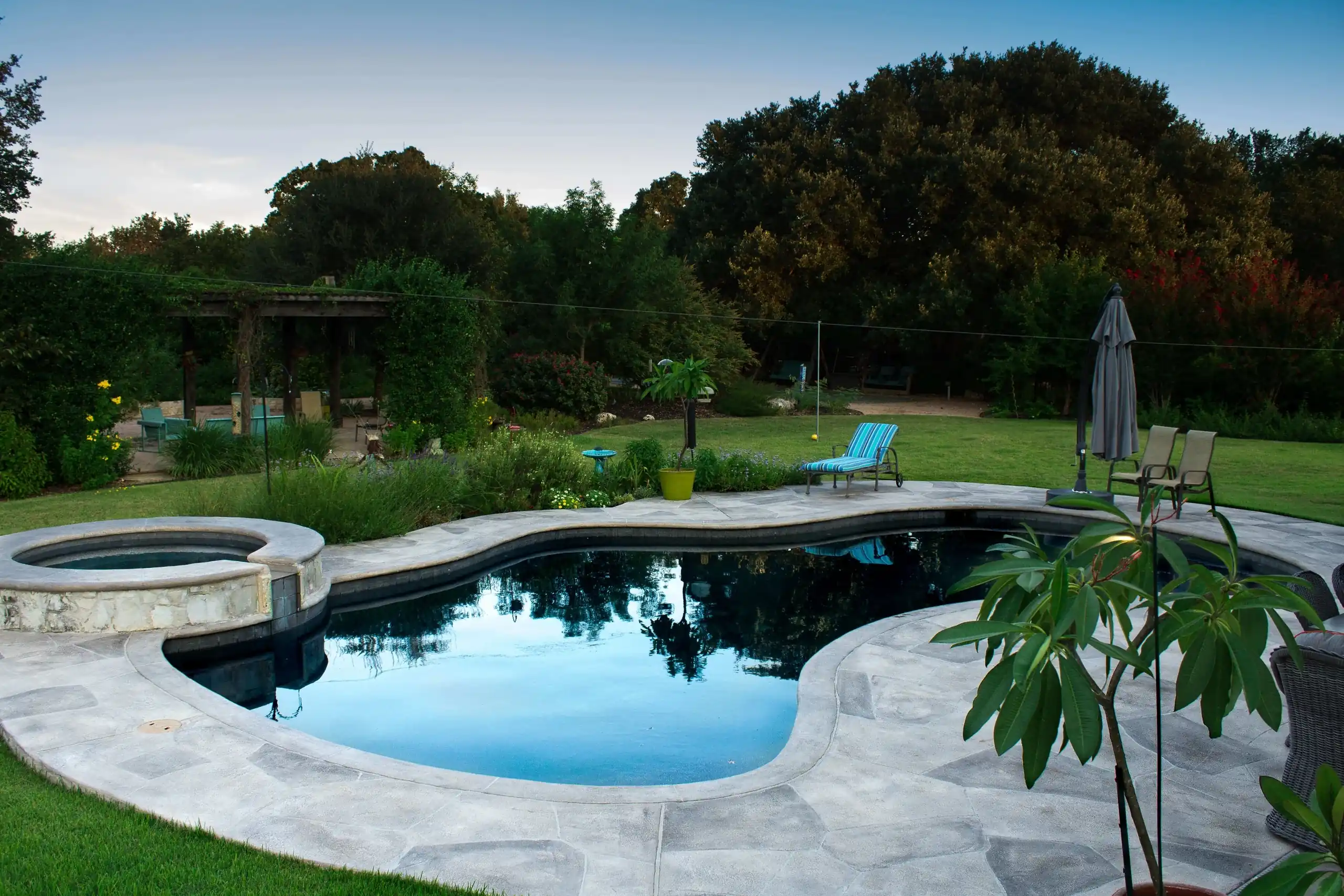
Our pool deck experts used 4 primary factors to rate concrete pool deck materials:
- Optimal heat resistance
- Moisture resistance
- Potential slip resistance
- Style and customization options
We placed slightly greater weight on heat, moisture and slip resistance — comfort and safety are the most valuable long-term considerations for your home’s pool area.
If all else was equal, we turned to style and customization as a tiebreaking factor. Your new or renovated pool deck is a long-term investment — it should deliver the beauty and aesthetic value you’ll love for decades.
TABLE: Ranking Concrete Materials for Pool Deck Projects
*The heat resistance of concrete is innately tied to its color. Lighter colors offer excellent heat resistance. Darker colors absorb more heat and do not offer the same advantages.
**Slip resistance of Carvestone and concrete pavers requires a textured surface, easily achieved with thoughtful customization.
Let’s talk about how each of these pool concrete deck materials stacks up in our rankings.
Carvestone (Modified Concrete Overlay)
Carvestone ranks highly for heat resistance, especially when formulated with light colors like off-whites, creams and tans. Moisture and slip resistance ratings are also strong — it’s wise to ask for a textured overlay to increase traction on your pool deck surface.
In terms of sheer customization, Carvestone is unmatched. Our outdoor contractors successfully use Carvestone to mimic flagstone, travertine, brick, porcelain tile, and even wood in pool deck designs.
For more options of our custom Carvestone overlay, view our Carvestone gallery.
Concrete Pavers
Concrete pavers offer excellent heat and moisture resistance, although darker colored pavers retain more heat than others. Textured pavers provide strong slip resistance.
In general, the gaps between concrete pavers allow shifting and settling when properly filled with polymeric sand. This adds value in poolside areas without an underlying concrete substrate — it also makes repairs of smaller sections easier.
Broomed Concrete
Broom-finished concrete has excellent texture to prevent slips and falls, and it’s usually a lighter color that offers innate heat resistance. Moisture resistance is on par with other high-end concrete pool deck options.
A lack of style and customization is where broomed concrete falls short. You’ll ultimately have a single-colored slab surrounding your pool. On a positive note, this often makes broom-finished concrete a good option for budget considerations — install broomed concrete now, then come back in a few years to add pavers or Carvestone over it.
Why We Don’t Recommend Stamped Concrete
Stamped concrete is subpar at preventing slips and falls around a poolside area. Its surface is less textured than other concrete materials, leaving it a bit slick when exposed to pool water. Heat resistance is still relatively good.
It’s important to recognize stamped concrete as a two-color design system — one color for the base, and one color for the imprint. Complex design simply isn’t possible, and it falls quite short against Carvestone and other customizable overlays.
The final dealbreaker? Stamped concrete doesn’t bond to existing concrete substrates. One simple crack, and delamination begins in your pool deck.
Your Concrete Pool Deck: New Construction or Renovation?

The last major consideration when selecting a concrete material is simple: are you installing a new pool deck, or taking on a pool deck renovation?
Each provides a unique use case that offers different pros and cons for material selection.
Expert Tips: Using Concrete in Pool Deck Renovation
The big question: what is your existing pool deck made from? Is it a concrete surface, exposed aggregate, pavers, or another material?
If your existing pool deck is concrete: Overlay is your best option. Carvestone is easily applied to your existing concrete with a bonding layer. It’s also quite thin — your refinished pool deck won’t sit up much higher than your inground pool.
If your existing pool deck is pea gravel or exposed aggregate: Choose concrete overlay materials. Carvestone also easily bonds to these surfaces.
If your existing pool deck is another material: If you want a concrete pool deck, you’ll either have to install concrete pavers or pour a new concrete substrate for broomed concrete or overlay. It’s often more cost-effective to lay pavers in these scenarios — ask your installer.
General advice: It’s difficult to the match color and texture of your existing pool deck with plain concrete or other materials. Carvestone offers a fresh start and brand new design, as well as higher PSI and pressure resistance than standard concrete.
Are you ready to create the pool deck of your dreams? Schedule your free design consultation today!
Expert Tips: Using Concrete for New Pool Deck Construction
The big question: Do you want to pour a concrete substrate, lay down pea gravel or exposed aggregate?
If you do, then Carvestone is the ideal recommendation. A modified concrete overlay allows homeowners an unlimited array of design options. Start your project with the precise color, texture and pattern you want.
If you don’t, then consider concrete pavers. They don’t require a concrete substrate and still offer excellent design options, heat and slip resistance.
On a budget? Consider installing a broom-finished concrete pool deck now. Come back in a few years and lay down fresh Carvestone or concrete pavers to add a jolt of style when it fits your budget.
Our Expert Concrete Pool Deck Recommendations

Allied Outdoor Solutions believe Carvestone is the best overall pool concrete deck material for resurfacing and renovation projects. Its unparalleled style customization, superior pressure resistance and strong heat, moisture and slip resistance make it the ideal choice for most homeowners.
Concrete pavers are a wonderful option for new pool deck installation, especially for homeowners who don’t want to install a concrete or exposed aggregate substrate.
🏅 Carvestone is Best for Pool Deck Resurfacing
Key benefits:
- Superior design flexibility and customization
- Ability to match virtually any existing home or outdoor space aesthetic
- Cracks and superficial damage can blend into your design
- 6,000+ PSI direct pressure resistance
- Thin layer doesn’t add height to your existing pool deck
- Non-skid sealant element adds further slip resistance
Ownership notes:
- Seal Carvestone every 2 years for optimal performance
- Choose light colors to enhance heat resistance
- Textured Carvestone provides greater slip resistance
Pro design tip: Allied Outdoor Solutions offers sample board on-site: see what your pool deck will look like before we install it!
🏅 Concrete Pavers Excel for New Pool Deck Installation
Key benefits:
- Excellent “blank slate” material for new installation without an existing substrate
- Superior pound-for-pound strength in individual pavers
- Simple to repair and replace in smaller sections
- Good design flexibility and ability to texture surfaces
- Can mimic natural stone pavers, with a less porous nature
Ownership notes:
- Use polymeric sand to fill gaps effectively
- Opt for lighter colors to mitigate heat absorption
- Seal regularly as suggested by your installer
FAQs About Pool Concrete Deck Materials
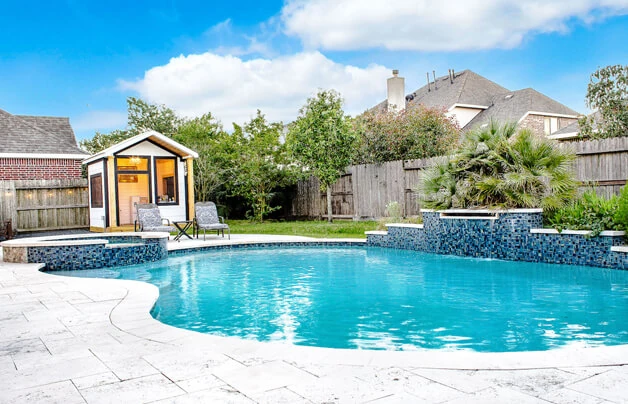
Is concrete good for a pool deck?
Yes, concrete is often the best material choice for pool decks. Its inherent strength, pressure resistance and heat resistant nature adds value in poolside areas. It’s also a cheaper alternative to other desirable pool deck materials like porcelain tile and travertine.
Does a concrete pool deck need to be sealed?
Yes, sealing your pool’s concrete deck is the best way to prevent long-term moisture damage, stains and general wear. A skid-resistant sealant element also reduces the risk of slips and falls around your pool.
How often should I seal my concrete pool deck?
Seal your concrete pool deck every 2 years for optimal performance and protection against moisture, pool chemicals, stains, and general degradation.
Do concrete pavers stain on a pool deck?
All concrete stains over time due to weathering and outside forces. However, concrete pavers are less likely to stain than other cement applications — pavers are rated for less than 5% absorption. This aids in their resistance to oil, salt, and pool chemicals.
Is stamped concrete good for pool decks?
We do not recommend stamped concrete for pool decks. It’s less able to be textured than other concrete applications, leading to higher slip-and-fall risks than concrete overlay or textured pavers. Carvestone and concrete pavers offer better pressure resistance and design customization options as well.
Need Pool Concrete Deck Installation or Renovation in Texas?
Our design-build experts trust Carvestone modified concrete overlay as the superior choice for most residential pool decks, especially renovations. For new pool deck installation without a concrete substrate, choose concrete pavers for optimal performance.
We’ve installed tens of thousands of pool decks throughout Texas — all with a winning combination of collaborative design, high-quality materials and thoughtful, custom craftsmanship.
If you’re ready to install or renovate your concrete pool deck space in Texas, talk to us. The consultation is free, and loving your backyard pool space is priceless.
Lorem Ipsum has been the industry's standard dummy text. Lorem Ipsum is simply dummy text of the printing and typesetting industry.
Lorem ipsum dolor sit amet, consectetur adipiscing elit. Suspendisse varius enim in eros elementum tristique. Duis cursus, mi quis viverra ornare, eros dolor interdum nulla, ut commodo diam libero vitae erat. Aenean faucibus nibh et justo cursus id rutrum lorem imperdiet. Nunc ut sem vitae risus tristique posuere.



.svg)

.svg)



.svg)




